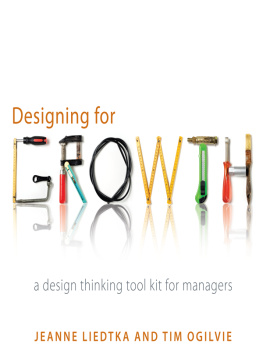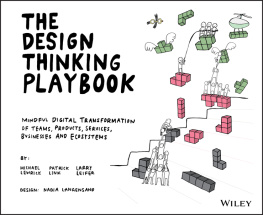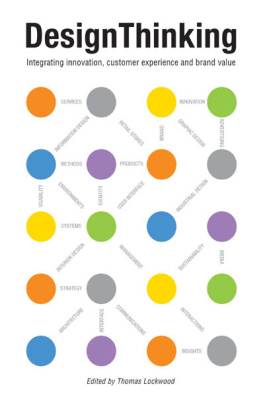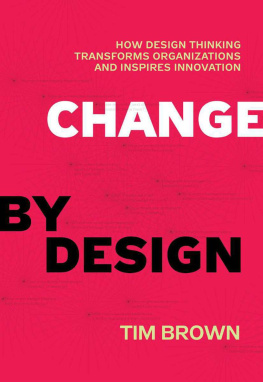Tim Seitz
Technical University of Berlin, Berlin, Germany
ISBN 978-3-030-31714-0 e-ISBN 978-3-030-31715-7
https://doi.org/10.1007/978-3-030-31715-7
Translation by Lisa Cerami
Based on a translation from the German language edition: Design Thinking und der neue Geist des Kapitalismus. Soziologische Betrachtungen einer Innovationskultur by Tim Seitz. Copyright transcript Verlag 2017 All Rights Reserved.
The Editor(s) (if applicable) and The Author(s), under exclusive license to Springer Nature Switzerland AG 2020
This work is subject to copyright. All rights are solely and exclusively licensed by the Publisher, whether the whole or part of the material is concerned, specifically the rights of translation, reprinting, reuse of illustrations, recitation, broadcasting, reproduction on microfilms or in any other physical way, and transmission or information storage and retrieval, electronic adaptation, computer software, or by similar or dissimilar methodology now known or hereafter developed.
The use of general descriptive names, registered names, trademarks, service marks, etc. in this publication does not imply, even in the absence of a specific statement, that such names are exempt from the relevant protective laws and regulations and therefore free for general use.
The publisher, the authors and the editors are safe to assume that the advice and information in this book are believed to be true and accurate at the date of publication. Neither the publisher nor the authors or the editors give a warranty, expressed or implied, with respect to the material contained herein or for any errors or omissions that may have been made. The publisher remains neutral with regard to jurisdictional claims in published maps and institutional affiliations.
Cover pattern Melisa Hasan
This Palgrave Pivot imprint is published by the registered company Springer Nature Switzerland AG.
The registered company address is: Gewerbestrasse 11, 6330 Cham, Switzerland
Preface
Two years have passed since my bookDesign Thinking und der neue Geist des Kapitalismuswas published in Germany. Since then, I have joined the Innovation Society Today research training group at the Technical University (TU) of Berlin, and this institutional move has greatly impacted my recent thoughts about the topic. It is within the intellectual context of my colloquium at the TU that I have been able to oversee the translation of the book into English, and I want to share some thoughts about what has oriented my thinking during this process.
As a sociologist, design thinking strikes me as a particularly rich strategic research siteborrowing from Robert K. Mertons terminologyand I was interested to see what we can learn about the society we inhabit by examining design thinking closely. My assumption has been that many peculiarities of our present moment are concretized and legible in design thinking, wherein our world becomes visible as an innovation societyand where the solution to any sort of problem is simply more innovation.
How did we get here? As Benot Godin has pointed out, until the beginning of modernity, innovation was considered a threat to the existing social order and understood pejoratively. Only after our pre-modern static societal order became dynamic did innovation gain its positive connotation. Modern societies stabilize through change, and innovation is a central driver of this process. Weas modern subjectsare subordinated to a systemic imperative to innovate, and design thinkings success becomes comprehensible in light of this imperative. In design thinking, creating innovation seems simple and intuitive: one merely needs to follow the appropriate method and complete the appropriate steps in a process. My books contribution to the field has been to consider design thinking ethnographically and to show how the innovation imperative unfolds in practice.
A central argument of the innovation society-thesis is that innovation becomes reflexive. While we can find innovations throughout human history, to make innovation the explicit goal of ones actions is a rather recent phenomenon. Design thinkings sole purpose is the generation of innovation, the production of new solutions to problems . Innovation becomes an end in itself, and one can see how design thinking must contend with several conflicts that arise therein. On the one hand, there is the problem with newness. Can design thinkings output always be understood as new when one knows from the beginning of the process that something new must emerge? In the book, I will discuss moments when it seemed to me that my informants had to struggle to name something new in order to keep design thinkings promise alive. This is also related to the question of urgency. The motto of the school of design thinking in Potsdam is Dont wait. Innovate! But how can one sustain this sense of urgency over time? And what does it mean to be constantly hurrying? It will become clear throughout the book that urgency is built into design thinkings architecture, and it is necessary to constantly work to maintain it. Lastly, there is the question of deviance. Design thinking promises to unleash human creativity by creating an atmosphere in which creative expression , deviance, and wild ideas are encouraged. But what does it mean to establish deviance as normative? I will discuss instances in which design thinking participants complied with the process by deviating, and obviously, this had a quite conventional feel to it.
In innovation society, the imperative to innovate is not restricted to the commercial sphere. It reaches into politics, art, education, and really every part of society. We can observe, too, that design thinking spreads into these realms as well. One can find design thinkers facilitating workshops in elementary schools, universities, and art schools as well as in public administration and politics. There are also initiatives that apply design thinking to social problems , and an informant once talked to me about his idea to develop a design thinking workshop on capitalism itself. All of this has consequences. A mode of thinking that originated in product design moves to areas that function according to different logics. To fulfill its promise as a universal problem solver, design thinking must describe any problem as solvable by a product , service, or process. Other fields must be adapted to design thinkings problem-solving ethos that focuses on symptoms rather than causes. This evidences design thinkings inherent blindness toward structures and, I would argue, reduces the horizon of social possibility, while conforming to the objectives of corporate product development and marketing.
So what can we do? Is there a way out? As one might expect from a sociologist, I am not offering direct answers here. I see no easy way of repairing design thinking, but dealing with the topic allows us to touch upon some of the fundamental problems of innovation society and maybe modernity as a whole. Furthermore, resisting the innovation imperative cannot simply mean refusing innovation altogether. As Bruno Latour has recently noted, we cannot escape modernity by simply reversing the modern telos and returning to imagined ways of old.












